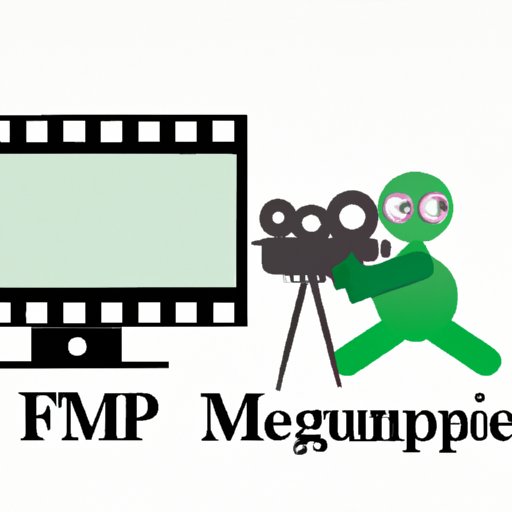
I. Introduction
As the name suggests, FFmpeg is a powerful multimedia framework that serves as an essential tool in video editing and media conversion. It is open-source software that is highly portable and can run on Windows, macOS, Linux, and other platforms. FFmpeg is an ideal tool for manipulating media files, including video, audio, images, and even live streams. It offers powerful features such as converting, streaming, filtering, and even recording multimedia.
In this article, we will provide a step-by-step guide on how to install FFmpeg on Windows, macOS and Linux. We will also provide a video tutorial on how to install FFmpeg and troubleshoot common errors. Lastly, we will compare different methods for installing FFmpeg and help you choose the best-suited method for your needs.
II. Step-by-Step Guide for Installing FFmpeg
To start using FFmpeg, you need to download and install it on your computer. Follow the steps below to install FFmpeg on your Windows, macOS or Linux:
Windows
1. Download the FFmpeg Windows distribution from the official website https://ffmpeg.org/download.html. Choose the right build according to your system architecture (32-bit or 64-bit), release type (static or shared), and linking (with or without SSL).
2. Extract the contents of the downloaded ZIP file to a folder on your computer.
3. Add the FFmpeg binary path to the System Environment Variable. To do this, Right-click on “My Computer” or “This PC” and select “Properties”. Click on “Advanced System Settings” → “Environment Variables”.
4. Under the “System Variables” section, scroll down and find the “Path” entry. Click on the “Edit” button, which will open the “Edit Environment Variable” window.
5. Click on the “New” button and enter the full path to the bin folder where FFmpeg was extracted to.
6. Click “OK” to finish the process. You may need to open a new command prompt to verify the installation.
7. Test the installation by opening the Command Prompt and type “ffmpeg”. You should see the FFmpeg version and usage information displayed.
macOS
1. On macOS, you can install FFmpeg using Homebrew, a popular package manager for macOS. Open the Terminal app from Launchpad or Spotlight.
2. Install Homebrew by entering the following command and hitting enter:
“`
/bin/bash -c “$(curl -fsSL https://raw.githubusercontent.com/Homebrew/install/master/install.sh)”
“`
3. Once Homebrew is installed, install FFmpeg by entering the following command:
“`
brew install ffmpeg
“`
4. Wait for the installation to finish. Once done, you can test the installation by opening Terminal and typing “ffmpeg”. The version and usage information will be displayed.
Linux
1. On Linux, you can install FFmpeg using your package manager. Open a Terminal window and enter the following command:
“`
sudo apt-get update
“`
2. Once the update is complete, enter the following command to install FFmpeg:
“`
sudo apt-get install ffmpeg
“`
3. Wait for the installation to finish. Once done, you can test the installation by typing “ffmpeg” in the Terminal. The version and usage information will be displayed.
III. Video Tutorial for Installing FFmpeg
While some users prefer following step-by-step guides, others prefer learning through videos. If you’re one of those users, we’ve got you covered. Here’s a practical and thoughtful video tutorial on how to install FFmpeg on Windows.
(Insert video tutorial link)
IV. Common Errors/Warnings That Arise During FFmpeg Installation and How to Fix Them
During the installation process, you may come across some errors or warnings. Some common errors and warnings include:
– “FFmpeg is not a recognized command”
– “libmp3lame is not found”
– “No package FFmpeg available”
To resolve these errors, you can try the following solutions:
– Ensure that FFmpeg is correctly installed on your system.
– Verify that the FFmpeg binary path has been added to the system environment variable.
– Install related libraries and codecs such as libmp3lame, x264, etc.
– Update your package repository and re-install using a package manager.
V. Comparison of Different Methods for Installing FFmpeg
There are multiple ways to install FFmpeg on your computer. Some popular methods include:
– Homebrew for macOS users.
– Executable file for Windows users.
– Package managers for Linux users.
While all methods have their advantages and disadvantages, the best-suited method for an individual depends on their level of expertise and their specific needs. If you are familiar with the command-line interface, installing FFmpeg using a package manager might be the best option for you. If you’re new to this type of software, an executable file may be the easiest approach.
You should also consider the frequency and complexity of the tasks you will be performing with FFmpeg. Homebrew and executable files are typically more suitable for one-time installations, while package managers are better suited for daily use or advanced tasks that require libraries or codecs.
VI. Conclusion
In conclusion, FFmpeg is an essential tool for anyone involved in video editing and media conversion. With this comprehensive guide, you can now install FFmpeg on your Windows, macOS and Linux computers. In addition to the step-by-step guide, we have also provided a video tutorial on the installation process and troubleshooting common errors. Lastly, we have compared different installation methods to help you choose the best-suited method for your needs. Now it’s time to get started on your own acquisition and use of FFmpeg.




